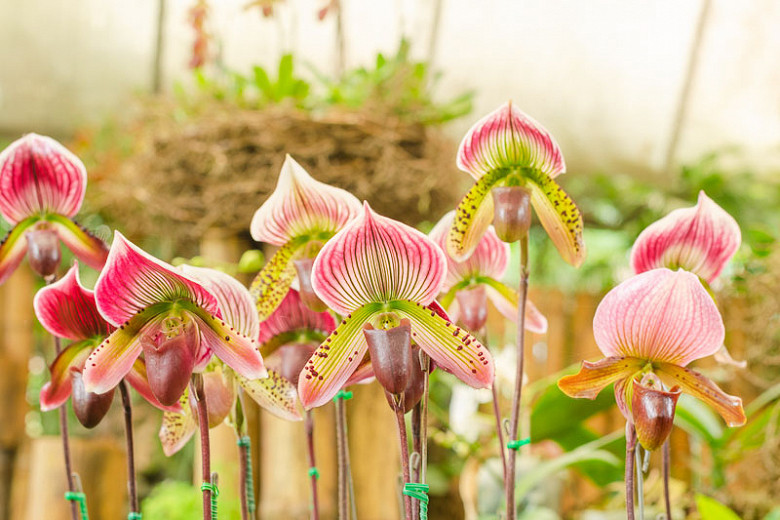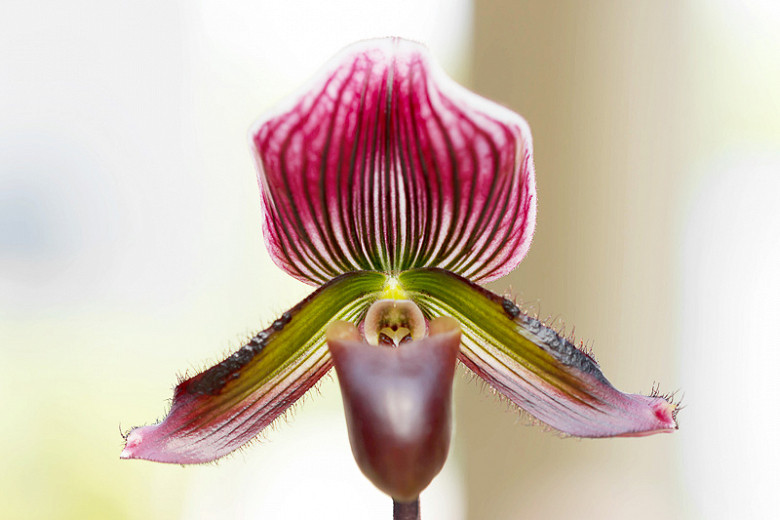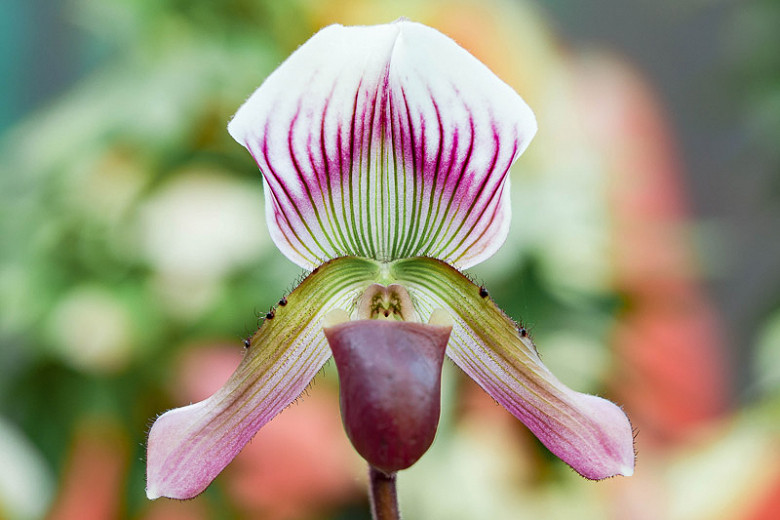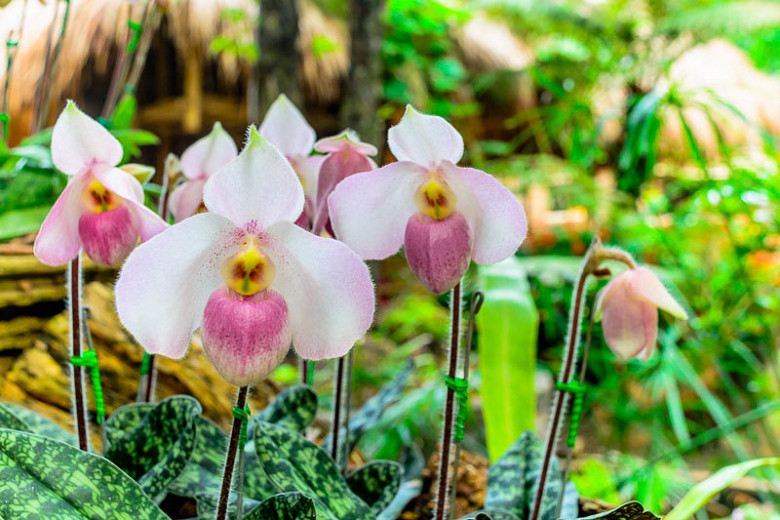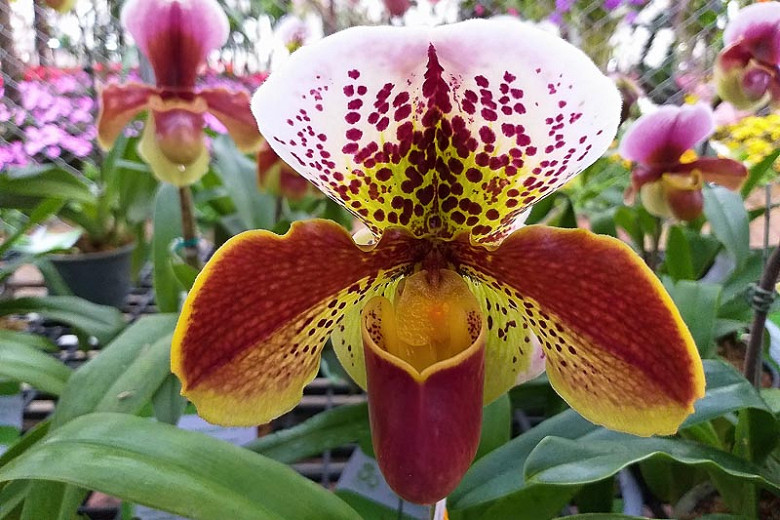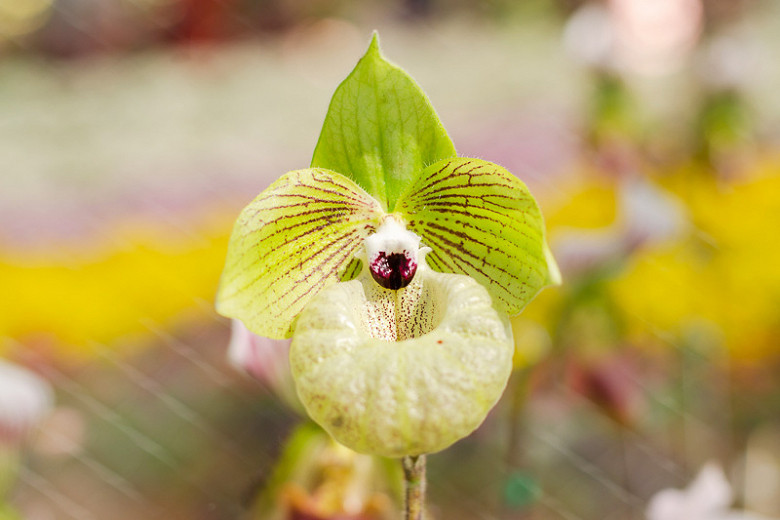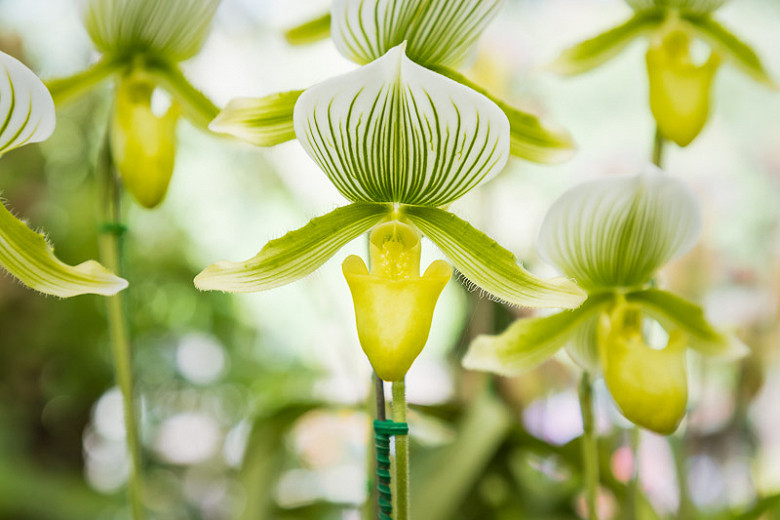Paphiopedilum sukhakulii (Sukhakuls Paphiopedilum)
Paphiopedilum sukhakulii (Sukhakul's Paphiopedilum) is a small semi-terrestrial orchid boasting large flowers, 5-6 in. across (12-15 cm). Each blossom features a yellowish-green to reddish-brown pouch, a broadly oval upper white sepal with longitudinal green lines, and green lower sepals with purple dots. Blooming in the late winter and spring, the flowers are borne singly on upright purple-brown stems. This orchid can flower twice per year and the flowers can last for 6-8 weeks. The attractive foliage of dark and light green mottled, narrowly elliptic leaves, up to 10 in. long (25 cm), is slightly dotted with red dots. The colorful leaves make this orchid an attractive houseplant even when it is not in bloom. Native to Northeast Thailand, Paphiopedilum sukhakulii grows in leafy sand-clay linens, usually along mountain streams, in the partial shade of large trees at heights of 780-3280 ft. (240-1000 m). A particularly ornamental species for the flowers as well as for the foliage.
- Grows up to 8-10 in. tall (20-25 cm).
- Grows in an open medium in a shaded position in summer protected from direct sunlight but move to a bright, unshaded position in winter. An east or west window or a shaded south window is best.
- Needs a night temperature of 70°F (21°C) and a daytime temperature of 86-88°F (30-31°C) in summer. In winter, the average daytime temperature is 80-86°F (27-30°C) and 48-53°F (9-12°C) at night.
- Maintain 70-80% humidity from the end of spring to fall, 60% at the end of winter and early spring – by standing container in a tray of damp pebbles – do not mist.
- During the growing season, water with slight drying between waterings. Reduce watering in winter and allow the substrate to be completely dry for 1 or 2 days to induce flowering.
- Feed once a week or every two weeks during the growing season. High-nitrogen fertilizer at the beginning of the growing season, high phosphorus fertilizer at the end of the growing season.
- When the blooms are finished, cut the spike down to the level of the leaves. Continue watering and fertilizing and within a year a new growth will spike to begin the blooming cycle again.
- When the plant has finished blooming is a good time to repot your orchid. Repot every 2-3 years. Paphiopedilum orchids like to be tight in their pots. An average plant should have a 4-6 in. pot (10-15 cm).
- Large plants can be divided by pulling or cutting the fans of the leaves apart, into clumps of three to five growths.
- Generally disease free. Keep an eye out for aphids, glasshouse red spider mites, and mealybugs.
- Native to Northeast Thailand.
Tips for reblooming
- Check regularly if the plant is secure in its pot and the root system is sound. If not, repot.
- Try applying a blooming fertilizer in the early spring months.
- Move the orchid to a cooler, brighter location for a week, then return it to its original location.
Requirements
| Hardiness | 9 – 12 |
|---|---|
| Plant Type | Orchids |
| Plant Family | Paphiopedilum – Slipper Orchids |
| Exposure | Partial Sun |
| Season of Interest | Spring (Early,Mid,Late)Winter |
| Height | 8" – 10" (20cm – 25cm) |
| Water Needs | Average |
| Maintenance | Average |
| Soil Type | Loam |
| Soil pH | Acid, Alkaline, Neutral |
| Soil Drainage | Well-Drained |
| Characteristics | Showy, Evergreen |
| Garden Uses | Patio and Containers |

